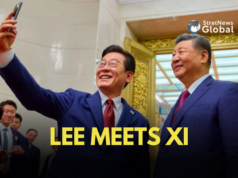India’s Techscape is complex, uneven, yet exciting with great potential if the government and industry get it right. That was the consensus at SNG’s Roundtable on Tech which featured a high power panel comprising digital policy analyst Jaijit Bhattacharya, former diplomat Smita Purshottam, Subrata Mitra of Ather Energy, Shatakratu Sahu of the Carnegie think tank and Commodore Arun Golaya, who has driven innovation while in the Indian Navy.
Bhattacharya believes India may need to borrow from China’s playbook to beat the ecosystem the West has built over many decades. “Be leaders in multiple identified areas with government and industry working in tandem,” he said, pointing to electric vehicles as the biggest disruptor that China unleashed on the world.
Purshottam says India should go the whole hog on indigenous, and especially in an area like defence, the focus should be on research, development and acquisition instead of the current procurement which pushes import dependence.
Mitra said his company Ather decided a long time ago to design and build locally, so the code for the two-wheelers they make is entirely held in India. This is significant as India is a huge exporter of two-wheelers to the world. But he cautioned that R&D needs to be integrated in every possible way. EVs are made of aluminium and the giant presses that make the body of these vehicles need to be located within the premises of the factory.
Sahu commended India’s focus on AI but called for a comprehensive regulatory framework, that will enable AI to develop and evolve. India also needs to adequately skill its labour force and while the country is rich in data, the problem lies in the language of the internet which is English.
Former Commodore Golaya acknowledged the Indian Navy’s deep roots in indigenisation, designing and building ships of all kinds at home. But the key, he believes, is innovation. India, for instance, is using gas turbines to power its vessels but making it in India even with tech transfer maybe difficult.
In his view.”India did not spend sufficient time in the Industrial Age and now we are in the Information Age.”
Tune in for more in this discussion on technology, India and the way forward.
Thirty eight years in journalism, widely travelled, history buff with a preference for Old Monk Rum. Current interest/focus spans China, Technology and Trade. Recent reads: Steven Colls Directorate S and Alexander Frater's Chasing the Monsoon. Netflix/Prime video junkie. Loves animal videos on Facebook. Reluctant tweeter.




